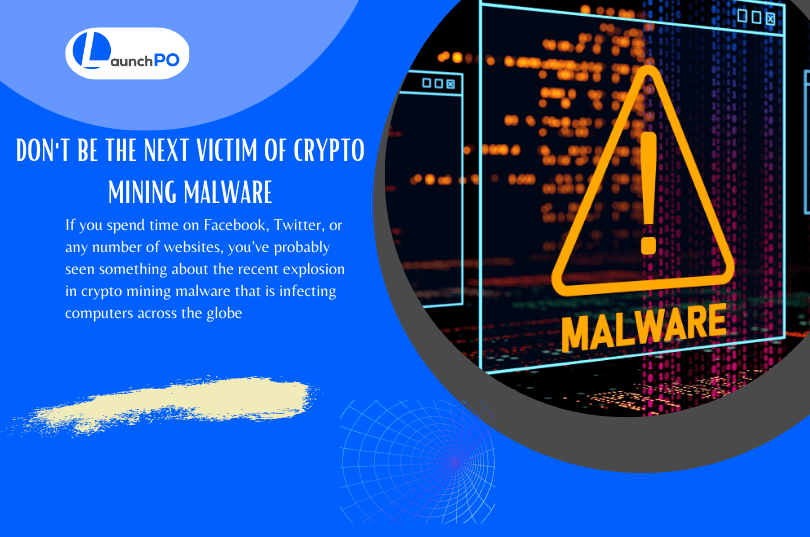If you spend time on Facebook, Twitter, or any number of websites, you’ve probably seen something about the recent explosion in crypto mining malware that is infecting computers across the globe. But what exactly does this mean? And what should you do if you think you’re a victim? Let’s take a look at some of the answers to these questions and more.
Miners and malware?
It’s worth understanding how miners work and how they might be able to infiltrate your system. Cryptocurrency miners are essentially malicious software tools that infect a system and use its computing power to solve complex equations in order to generate more coins. Many cryptominers aren’t installed by users, however; instead, these software packages are attached directly to hacked websites—the user doesn’t even need to be present for them to cause damage.
What is cryptocurrency mining?
Cryptocurrency mining is a way to convert computing power into cryptocurrency, like Bitcoin. Bitcoin and other cryptocurrencies run on blockchain technology. Blockchain is a type of digital ledger that securely logs transactions by bundling them together in blocks, each one time-stamped and linked to the previous block in a chain. These blocks are created by miners—users who set their computers to work verifying transactions and solving complicated math problems.
How does it work?
Cryptojacking uses a victim’s computer resources to mine for cryptocurrency. While your laptop or phone is being used for mining, you might notice a drop in performance or lag when opening files and apps on your device. Cryptojacking software can secretly load in web browsers, so you could also be mining cryptocurrency when visiting an innocent-looking website. A study from ad-blocking software company AdGuard found that websites with a large number of ads tended to be more likely to include cryptojacking code.
Does your computer have a virus?
You might be wondering if your computer has a virus. Sometimes malware is easy to identify, while other times you won’t notice it. Even an antivirus program isn’t foolproof – some viruses will be able to evade detection. Fortunately, there are some signs that can point you in the right direction. If your computer is running slowly or not operating properly, it could have been infected with crypto mining malware.
How do you prevent it?
The first step in preventing cryptocurrency mining malware is educating yourself on how these malicious programs work. And that’s why we wrote a separate guide for you today. We also took time to go through some user comments and experiences, as well as to analyze some real-life situations involving crypto mining malware. So let’s begin by talking about what crypto mining malware actually is, shall we?
A malware is malicious software that has the ability to steal information from your computer or otherwise compromise your security. The increasing popularity of cryptocurrencies has made them a target for hackers and malware developers alike, so we can’t expect this trend to slow down anytime soon. If you’re determined to keep your cryptocurrency safe, here are some tips on how to protect it from malware attacks.
1) Beware of Phishing Emails
2) Back Up Your Files
3) Install Antivirus Software
4) Use a Virtual Private Network (VPN)
5) Enable Two-Factor Authentication (2FA)
6) Limit Access to Public Wi-Fi Networks
7) Buy a Hardware Wallet









